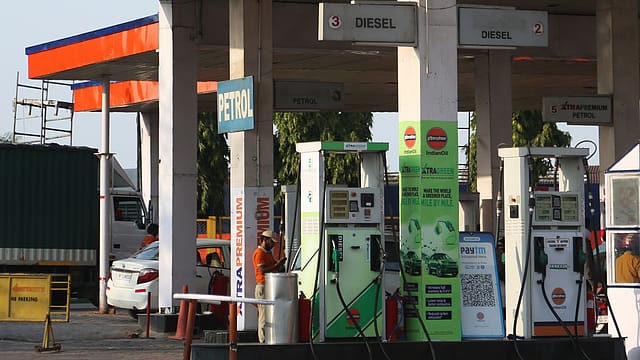Petrol prices rose 19%, diesel by 26.5% in 2 yrs: Govt
ADVERTISEMENT

Prices of petrol and diesel have not been increased by public sector oil marketing companies (OMCs) since April 6, 2022, despite record high international prices, Union Minister for Petroleum and Natural Gas Hardeep S. Puri said in a reply to a question in Lok Sabha today.
As a result, against the combined profit before tax of ₹28,360 crore in the first half of financial year 2021-22, the three state-run fuel retailers — Indian Oil Corporation Ltd. (IOCL), Bharat Petroleum Corporation Ltd. (BPCL) and Hindustan Petroleum Corporation Ltd. (HPCL) — have booked a combined loss of ₹27,276 crore in the first six months of the ongoing financial year.
While the average price of Indian basket of crude oil increased by 102% (from $43.34 to $87.55) between November 2020 and November 2022, the retail prices of petrol and diesel have increased in India by only 18.95% and 26.5% during this period, the petroleum minister says.
Prices of petrol and diesel in the country are linked to their respective prices in the international market. The retail prices of petrol and diesel depend on various factors such as crude oil purchase price, exchange rate, shipping charges, inland freight, refinery margin, dealer commission, central taxes, state VAT and other costs.
To insulate the Indian consumers from the impact of high international crude oil prices, the government had reduced the central excise duty twice on November 21, 2021 and May 22, 2022, effecting a cumulative reduction of ₹13 and ₹16 per litre for petrol and diesel respectively, which was fully passed on to consumers.
December 2025
The annual Fortune 500 India list, the definitive compendium of corporate performance, is out. This year, the cumulative revenue of the Fortune 500 India companies has breached $2 trillion for the first time. Plus, find out which are the Best B-schools in India.
Following these reductions in central excise duty, some of the states and union territories (UTs) also reduced value added tax (VAT) rates on petrol and diesel.
Meanwhile, crude oil prices dipped on Thursday as the US dollar strengthened. Futures of Brent crude — the international benchmark — fell to around $82 a barrel as possibility of further interest rate hikes by global central banks weighed on oil demand.
India imports more than 85% of its annual crude oil requirement. High crude oil prices severely impact the country's foreign exchange outgo, fiscal deficit and inflation numbers.
India also imports more than 60% of its domestic LPG consumption. Prices of LPG in the country are based on Saudi Contract Price (CP), the benchmark for international prices of LPG.
"Saudi CP rose from 236 $/MT in April 2020 to 952 $/MT in April 2022 and continues to prevail at elevated levels currently. However, the government continues to modulate the effective price to consumer for domestic LPG. Public Sector Oil Marketing Companies have suffered huge losses on sale of domestic LPG. To compensate these losses, the Government has recently approved a one-time compensation of Rs. 22000 crores to OMCs," the union minister says.
